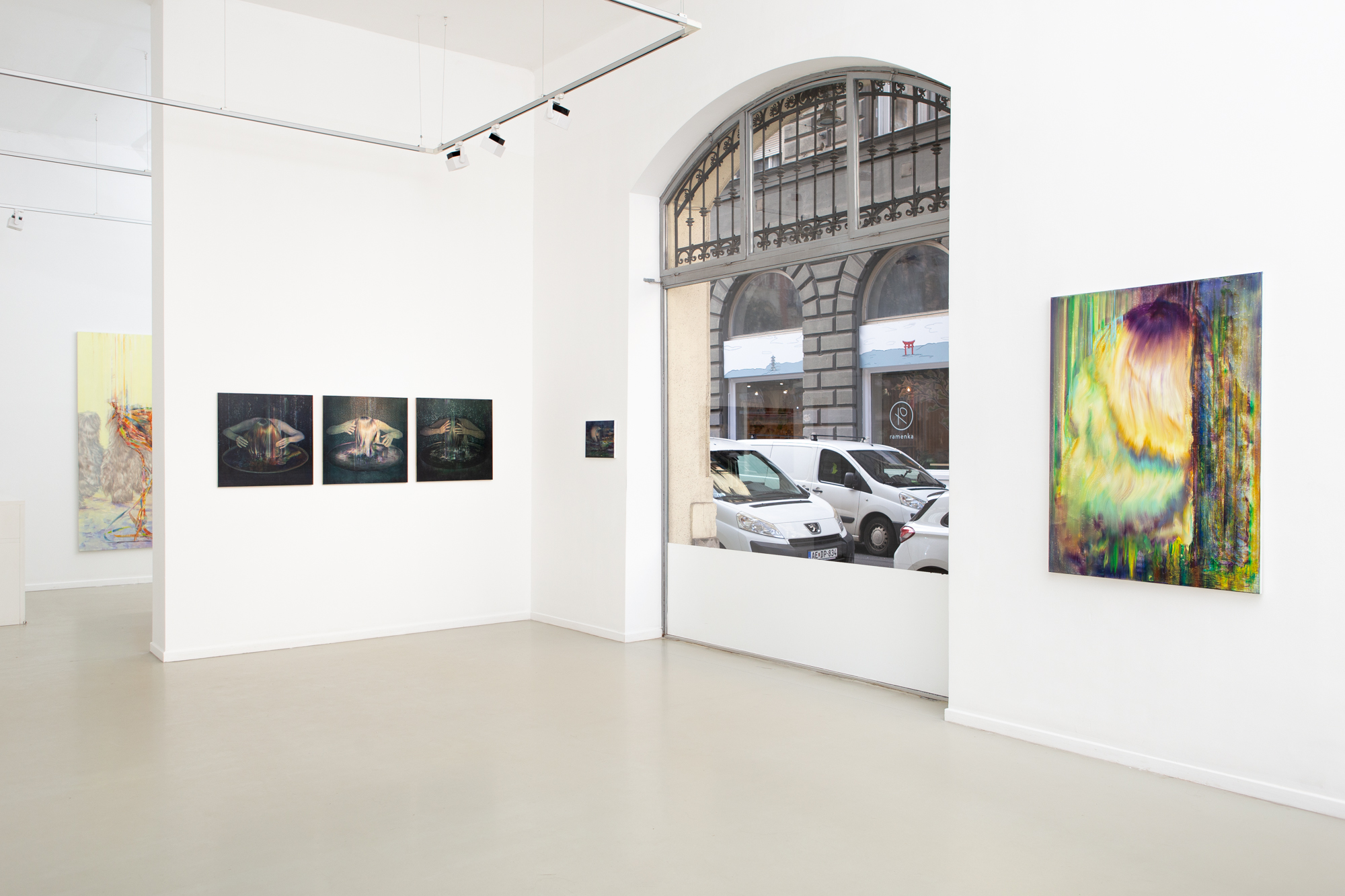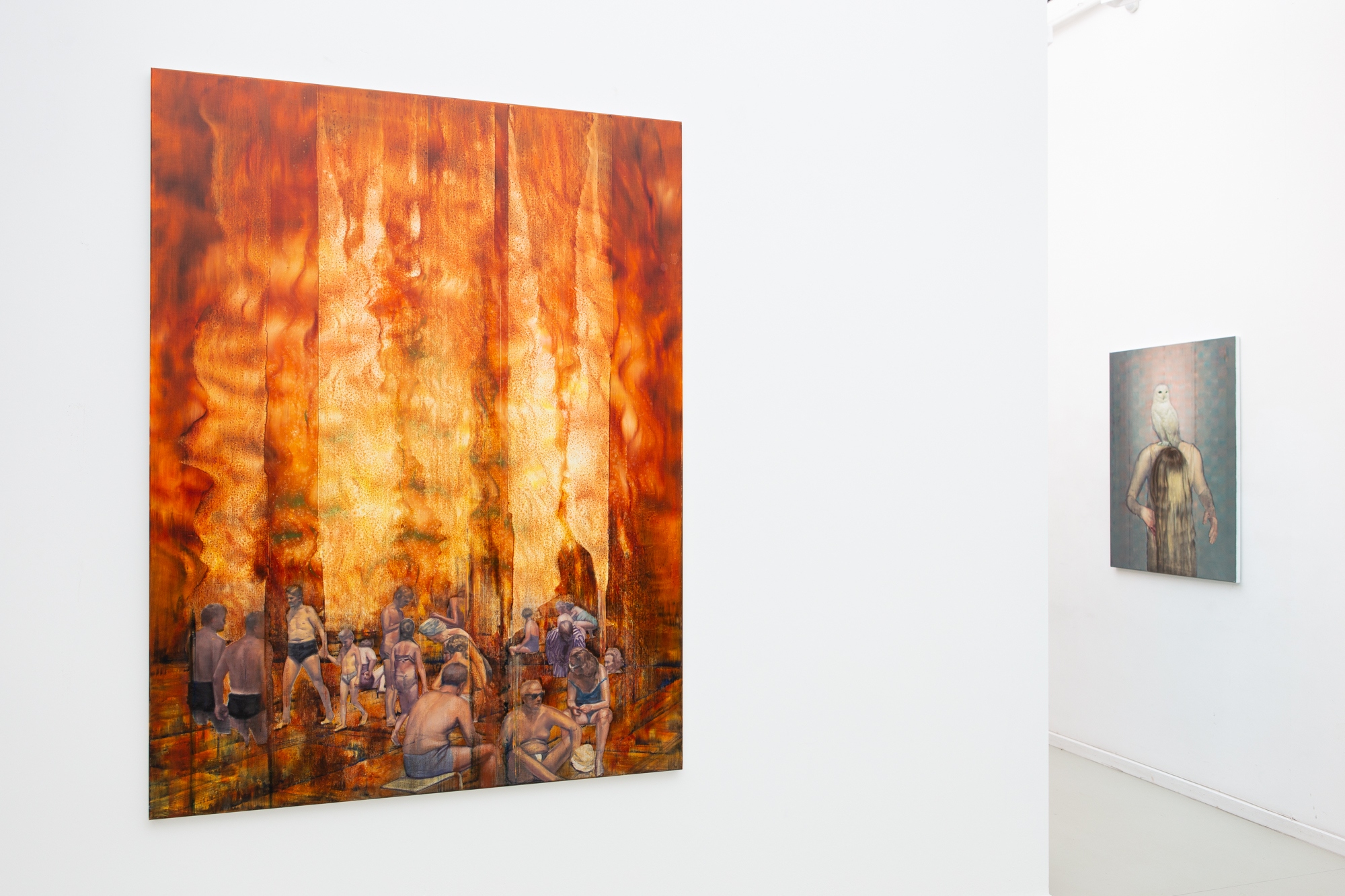











Attila Szűcs
Portraits of the last golden age
The Erika Deák Gallery is delighted to announce its next exhibition, new paintings by Attila Szűcs.
The exhibition, entitled Portraits of the Last Golden Age, is in fact a prophecy: it signs the inevitable coming of mankind’s greatest metamorphosis to date. The global climate catastrophe and the rise of artificial intelligence are changing the structures we have known so far to such an extent that facts we thought to be sound will soon become invalid, and new rules and constructs will define our reality. We are in the midst of a paradigm shift that will fundamentally change our lives and from which we may look back and see our current world as stable and harmonious. This could easily be the last golden age before a catastrophic end, in which there was room for humanity.
Attila Szűcs’ recent work addresses these subjects. One of the key works in the exhibition is an installation of ten paintings entitled Disappearing Choir, inspired by a photo from the 1960s found in the Fortepan collection. The original image shows a female choir singing what are probably revolutionary songs, while standing on a flight of stairs. Szűcs first dismantles and then reassembles the faces, by which he raises questions on the hypocrisy of propaganda. On the one hand, he points out that there are patterns passed on to future generations, both individually and socially, while at the same time he explores the relationship between the individual and the community in a thought-provoking context. Although each portrait has an individual character, an own personality, still in this group the individualities become insignificant and the spaces depicted become more important. The group of portraits forms an organic fabric in which the individual can only be understood in the context of the whole. The gaze is constantly cycling between the portraits, there is no resting point, while the viewer looks at one portrait, another face creeps into view. There is a softness, a kind of fluidity in our reception, and the full picture only becomes truly accessible while in the process of movement.
Over the past few years, Szűcs’s attention turned to examining and painting hair. For him, the falling and floating hair universes are symbols of the quantization of the world, he believes that our world derives its complexity from the multiplicity of its smaller units. As he says: a single strand of hair is a two-dimensional entity, barely perceptible to the eye, a mere line, but when it is in a large amount, it suddenly becomes a mass of a different sensation. His hair paintings play an interesting game with the viewer, from a close point, they are sensuously articulated patches of color with tiny, parallel lines, while stepping back, the concrete view unfolds, the abstract patches of color coalesce into a real mass of hair. Looking at the paintings it is striking how mesmerizingly Szűcs is able to depict light, air and atmosphere by these hair crowns: the glistening surfaces on the falling curls, the waving strands, the softly floating bands make the space and environment surrounding the hair almost palpable.
Like the paintings of Attila Szűcs, our present age is full of mystery and ambiguity, countless questions that make existence beautifully haunting. While the thought of transience is daunting, looking at Szűcs’ paintings we can be assured that in perish there is also the possibility of creation and beauty.
For more information please contact the gallery.
Opening: 2023. October 25, Wednesday, 6 PM
Opening speech by: Zsolt Petrányi, art historian
On view: 2023. October 26 - December 1.
Open: Wednesday - Friday, 12:00 - 18:00 pm and by appointment